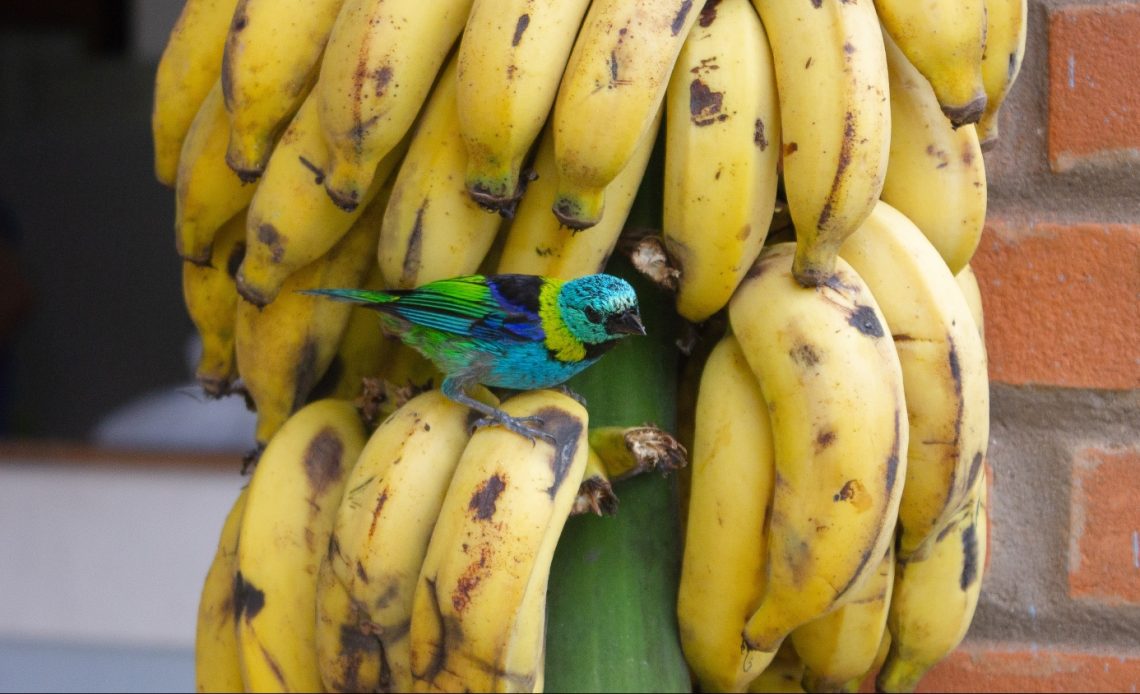

We’re here to help! Wild Yards is a completely free website that is 100% dedicated to helping you create a wildlife-friendly, sustainable yard. Read more
WildYards is reader-supported. When you buy a product through a link on our site, we may earn a comission. Every product is independently selected by our (obsessive) editors and our reviews are unbiased and objective. Read more about our mission or our privacy policy.
Birds are foragers, and although they’re happy to eat the nuts and seeds that we leave out for them, they actually enjoy a wide variety of foods. Insects and vegetation help round out a bird’s diet, ensuring they get all of the vitamins and minerals that they need to stay healthy. Fruits, too, help birds meet all of their nutritional demands. Blueberries, oranges, grapes, and plums are all great options for feeding birds. But can birds eat bananas, too?
Yes, birds can eat bananas. Starlings, flycatchers, warblers, and robins are especially fond of these soft, sweet fruits. Consider leaving a dish of sliced ripe bananas out to attract more of these beautiful songbirds to your backyard.
Are bananas safe for birds to eat?
Bananas are a safe, nutritious snack for birds to enjoy. So the next time you find yourself with an extra banana, feel free to set it outside for your feathered friends to snack on. It’s best to feed ripe bananas to birds. Birds are less likely to enjoy underripe bananas, as they are less sweet than ripe ones. Some birds prefer overripe bananas that have higher sugar content, although these bananas spoil more quickly than ripe ones.
While bananas are safe for birds to eat, it’s important to check them regularly and replace them if they show signs of spoilage. Rotting foods are not safe for birds to eat, so toss bananas out if they smell “off” or develop mold. Banana slices should be replaced weekly, and fruit feeders should be cleaned out just as often to prevent the spread of harmful bacteria.
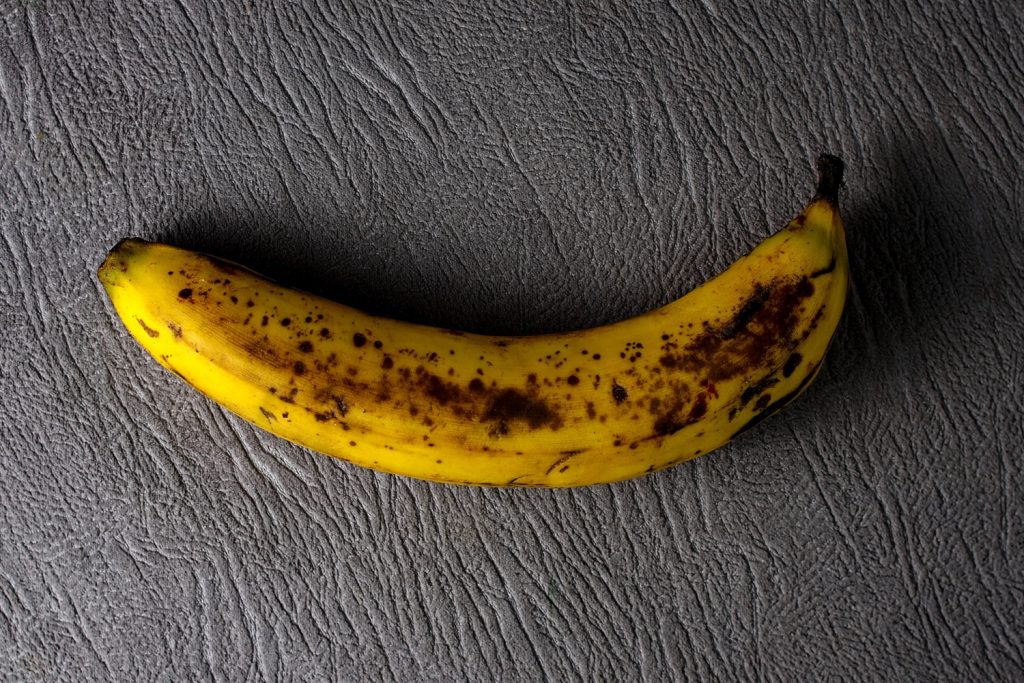
What makes bananas a healthy snack for birds?
An unripe banana is nearly 80% starch. As that banana ripens, the starch turns to sucrose, making it an ideal source of carbohydrates for hungry birds. Sugary bananas provide birds with the quick energy they need to build their nests, sing their songs, and continue searching for food.
A banana contains approximately 75% water. Although that’s not as much water as a strawberry, it still helps birds stay hydrated as they go about their day. Moisture-rich foods are ideal for feeding birds in the summer and autumn when the days are hot and droughts are the most common. Moist fruits also help keep the bird’s digestive tract in tip-top shape.
In addition to the banana’s digestive benefits, this fruit is also full of beneficial vitamins and minerals. Bananas are a good source of potassium, folate, magnesium, and vitamin C. These nutrients work together to support energy production, so birds can make the most of the foods they eat. Bananas also contain flavonoids, powerful phytonutrients that fight off free radicals and oxidation to keep your neighborhood birds healthy.
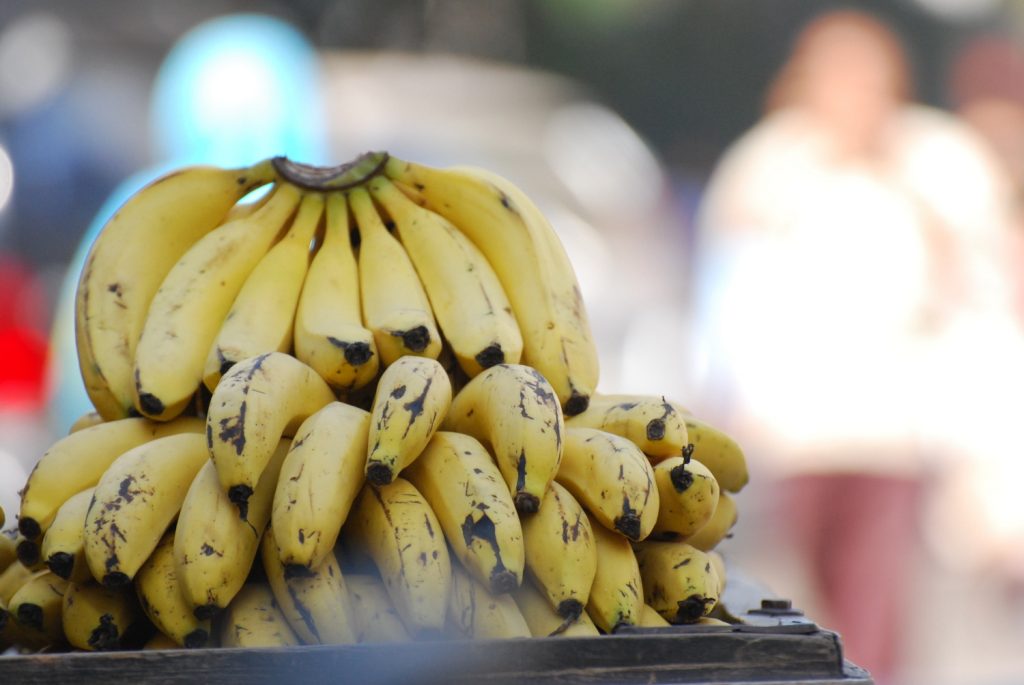
How should you prepare bananas for wild birds?
All you have to do to prepare bananas for the birds in your backyard is peel them and slice them. Use a sharp knife to cut the bananas into ½-inch pieces, being careful not to nick your fingers.
Again, it’s best to use ripe bananas. Most birds don’t like the taste of underripe bananas, so cutting them up before they ripen would be wasteful. It’s safe to feed slightly overripe bananas to the birds. But if the banana has turned black and brown, or if it has developed mold, then chuck it in the trash. Never feed birds anything that has mold or mildew on it, as it can make them sick.
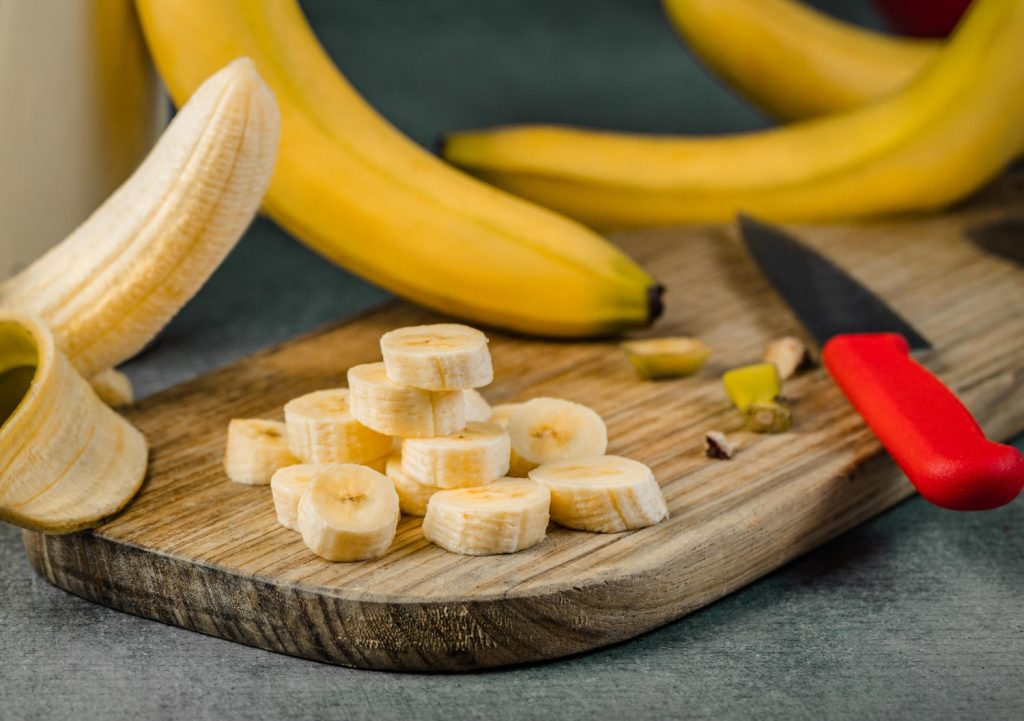
Should you leave banana slices in your bird feeders?
Because banana slices are moist, it’s best not to mix them in with the bird seed in your feeders. Juicy fruit slices may be tempting to the birds, but they can spoil birdseed quickly once they begin to break down. Plus, some birds just don’t like bananas. And if they find bits of it in their food, they may wind up wasting much of the seed while picking the banana pieces out.
How should you feed banana slices to the birds?
Instead of placing banana slices in a traditional birdseed feeder, try leaving them in a dish for the birds to pick through, instead. A terracotta plant saucer works well for this, but you can use anything you like — old pet food bowls, plastic containers, and large jar lids are also good options.
Place the dish a few feet away from your birdseed feeders, where the birds are sure to find it. Alternatively, you can set the feeder near your bird bath. Just be sure to keep all of these stations several feet apart to prevent dominant birds from ganging up on the more timid ones. Many backyard birds, including woodpeckers and bluejays, are aggressive toward other members of the species. So keeping resources far apart will prevent any unwanted competition.
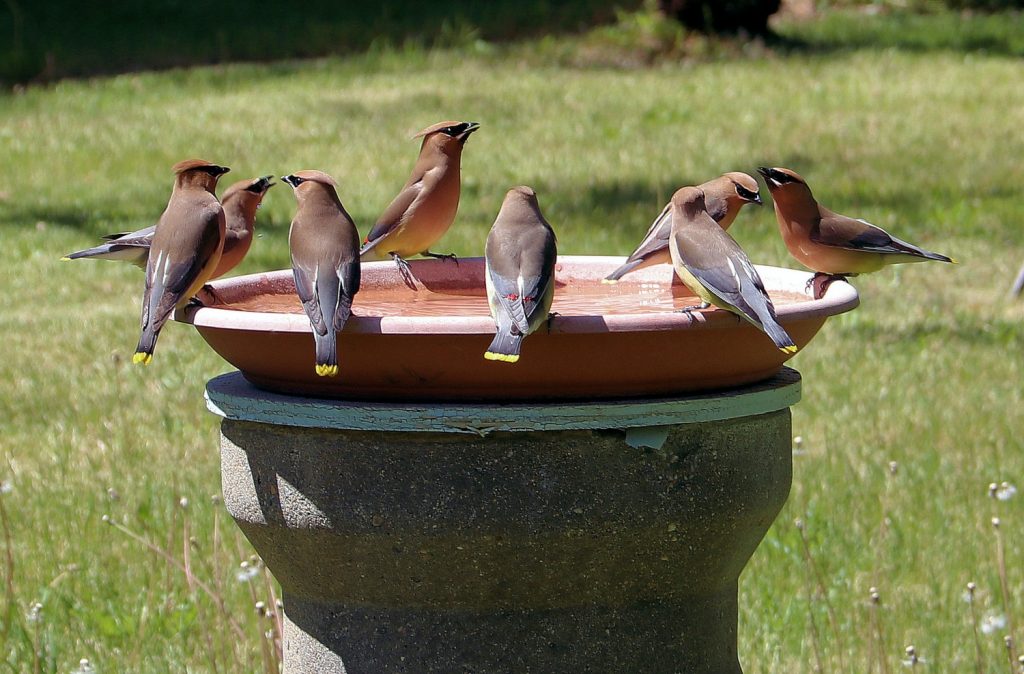
Can birds eat banana chips?
Fresh bananas contain just the right amount of sugar and water. But banana chips are dehydrated, which means they’re mostly sugar. Although birds rely on a certain amount of sugar to meet their energy needs, too much sugar is bad for them.
Besides, another reason why birds like bananas is because they’re soft. If you’ve ever had banana chips, you know that they’re anything but soft. So avoid feeding banana chips to birds, and give them fresh fruits instead.
Can birds eat banana peels?
Banana peels are rich in fibrous cellulose, which is difficult for birds to digest. For this reason, it’s best to avoid feeding banana peels to birds. Instead, we recommend tossing the peels into a compost bucket to be used to feed the plants in your garden.
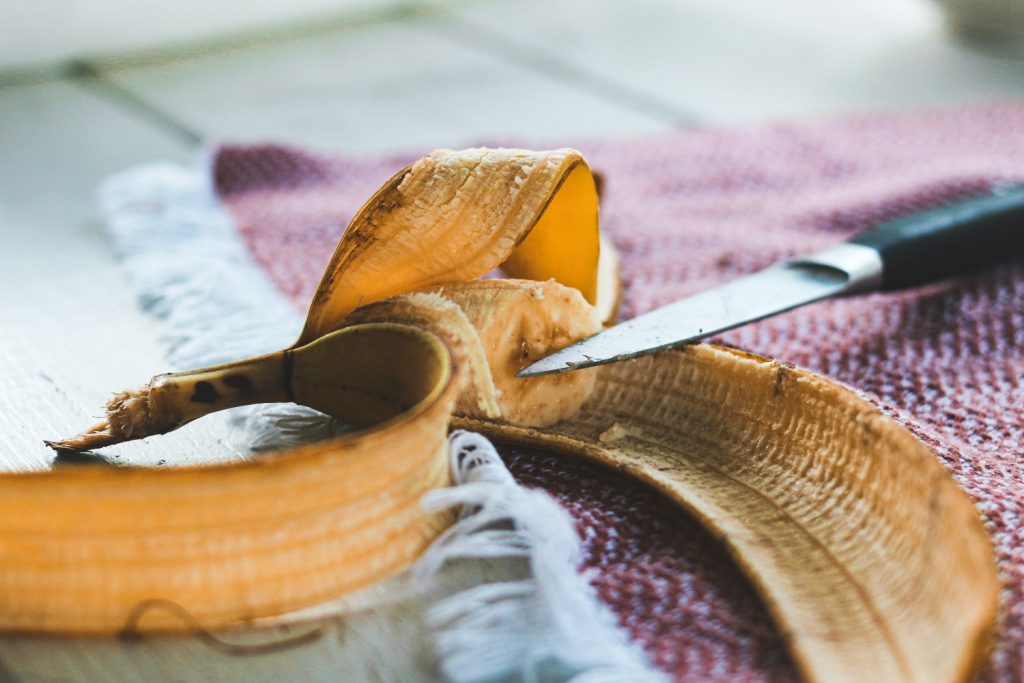
How often should you feed bananas to wild birds?
You can leave banana slices out for your local birds at any time. However, it’s worth noting that birds tend to prefer different foods depending on the time of year, as their nutritional needs change. For instance, birds are more likely to concentrate on eating nuts and seeds in the autumn and winter months, as these foods are rich in fats and proteins needed to generate heat.
The birds in your backyard are likely to enjoy bananas the most during the spring and summer seasons. This is when birds are most active, building nests, rearing their young, and chasing potential threats out of their territories. Even though there’s nothing wrong with leaving bananas out year-round, you may find local birds enjoy them most when it’s warm out.
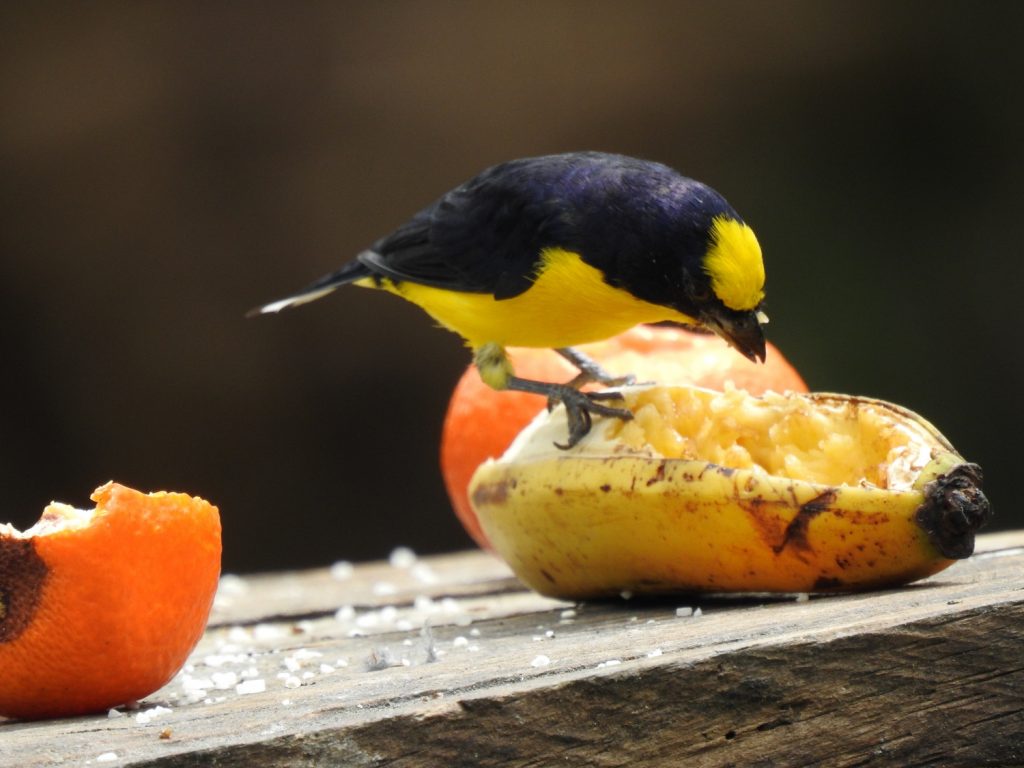
Can birds eat too much banana?
When it comes to their diets, birds are pretty good at self-regulating. Even if they really like a certain food, they probably won’t eat too much of it because birds are foragers at heart. They rely on a variety of foods to meet all of their nutritional requirements. Once they’ve had their fill of banana slices, they’ll move on to something else.
Still, because bananas contain so much sugar, it’s best to balance it out by offering other fruits along with them. Low-sugar fruits like blueberries and oranges complement carbohydrate-rich banana slices. Plus, birds appreciate variety. They’re more likely to visit a fruit feeder with multiple fruit options, as opposed to just one or two.
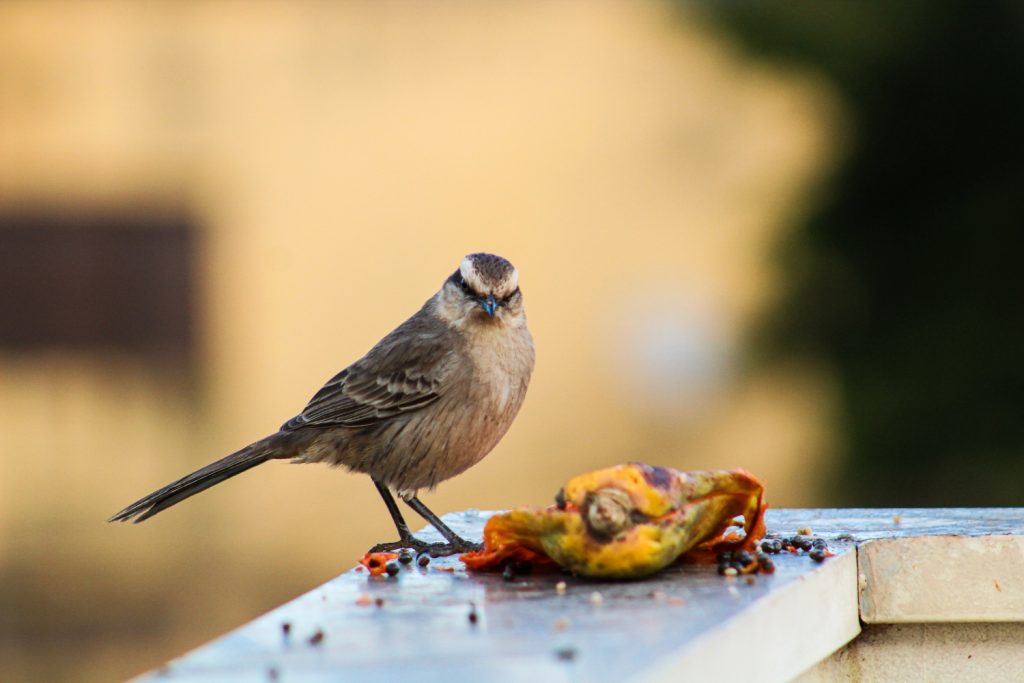
Which birds like to eat bananas?
Many birds enjoy snacking on bananas, but some birds like to eat bananas more than others. If you decide to set a dish of bananas out in your backyard, keep an eye out for the following birds:
- Blackbirds
- Bluebirds
- Blue jays
- Crows
- Dove
- Flycatchers
- Fieldfares
- Finches
- Great tits
- Magpie
- Mockingbirds
- Orioles
- Pigeons
- Redwings
- Robins
- Sparrows
- Starlings
- Tanagers
- Thrushes
- Warblers
- Waxwings
- Whitethroats
- Wrens
Bananas can be used to attract a variety of birds. And while the birds found on this list are known to enjoy eating bananas, it’s not impossible to see other birds sampling banana slices, as well. Once you add a few bananas to your fruit station, grab a pair of binoculars and keep your eyes open. You never know which birds you’ll find trying it out.
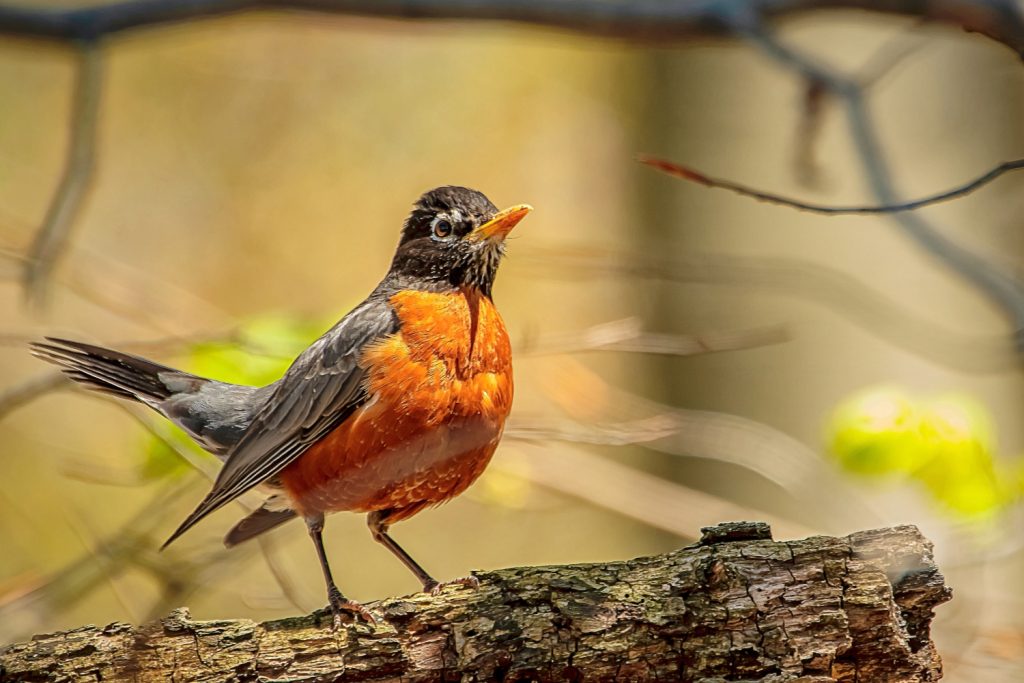
Can you use bananas to make suet?
While traditional suet cakes are made from beef fat, bananas can also be used as a suet binder. Add raisins, millet, sunflower seeds, mealworms, peanuts, and other bird favorites to mashed ripe bananas, and shape the resulting mixture into cakes. Banana suet cakes are packed with energy that wild birds need all year long. And you can adjust the other ingredients based on the season — peanuts and sunflower seeds for winter, raisins and mealworms for spring, and so on.
What else can you do to attract birds to your backyard?
Leaving an assortment of foods out, including banana slices, is a great way to bring more birds to your backyard. Installing a bird bath (and keeping it clean!) can also help by providing birds with a reliable source of water. And growing more of your ecoregion’s native pollinator plants will also encourage local birds to pay you a visit by providing them with the nuts, seeds, and vegetation they crave.
All in all, bananas are an excellent energy source for backyard birds. Just be sure to choose ripe bananas, and replace them regularly.
